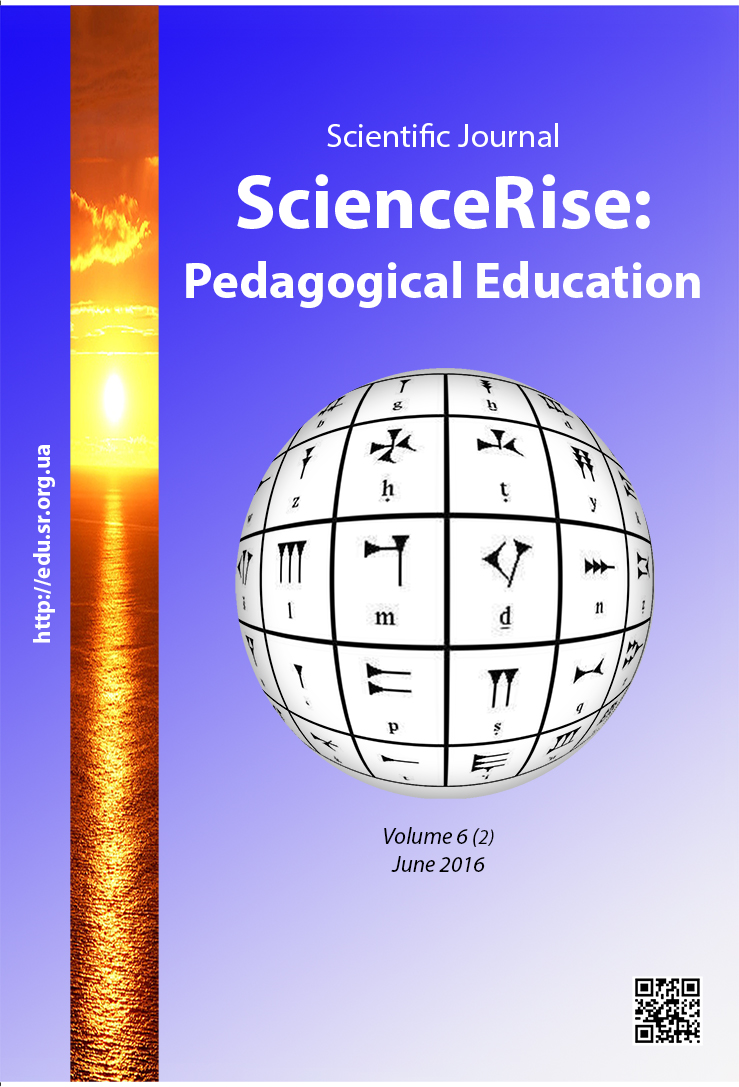Development of a comprehensive educational institution as a process of innovative changes
DOI:
https://doi.org/10.15587/2519-4984.2016.71671Keywords:
development, comprehensive educational institution, development stages, management, process, potentialAbstract
In the article is considered the question about the stages of comprehensive educational institution development.
The author determined, that the process of comprehensive educational institution development is connected with projecting of its environment, organization of innovative activity, creation of conditions for realization of the teachers’ professional potential, generation of ideas and its practical realization, adaptation to the requirements of external environment.
The author gives his own definition of the category of development as an innovative activity directed on the creation of additional conditions for satisfying educational, professional, social needs and demands of the educational process participants on the base of interaction and partnership between school and the other subjects of educational space.
The author separates the next stages in the education institution development: disposition, adaptation, generation of ideas, production of ideas, intensity of the school potential. For each stage are formulated the managerial actions that must be done for progressive transfer of innovative activity from the one state to another one, more effective.
There were also formulated certain list of risks that can complicate the process of institution development
References
- Vygotsky, L. S. (2000). The psychological foundations of creative activity. Free development of the personality of the student: Philosophical and psychological-pedagogical bases of education. Stavropol: SKIPRO, 783.
- Sparrow, D. V. (2005). College of education: theoretical bases of management development. Science. VSN. Budennogo. state med. UN-Tu im. K. D. Ushinsky, 11-12, 47–54.
- Danilenko, L. I. (2007). Pedagogical innovations in modern theory and practice. Director of the school, 3, 28–49.
- Khomeriki, E. G., Potashnik, M. M., Lawrence, A. V.; Potashnik, M. M. (Ed.) (1994). The development of the school as an innovative process. Moscow: New school, 64.
- Meleshko, V. V. (2013). The Management of development of rural small schools. Kyiv: Pedagogical thought, 104.
- Pervouralskaya, I., Scherbakova, L. et. al (2004). Organizational-pedagogical conditions of the innovative activities of extracurricular institutions of a new type. Director of the school, 33-34, 7–41.
- Sergeeva, L. M.; Oliynyk, V. V. (Ed.) (2013). Managing the development of technical and vocational education institutions: theory and methodology. Kyiv – Kherson: Ailanthus, 452.
- Slobodchikov, V. S. (2003). Problems of formation and development of innovative education. Innovations in education, 2, 4–18.
- Kunz, G., O'donnell, C.; Gvishiani, D. M. (Ed.) (1981). Office: system and situational analysis of managerial functions. Moscow: Progress, 250.
- Kutsenko, V. S. (1984). Social problem: the Genesis and the solution. Methodological analysis. Kyiv: Of Sciences. the idea, 438.
- Marmaza, A. I. (2004). Innovative approaches to the management of the school. Kharkov: Osnova, 240.
Downloads
Published
How to Cite
Issue
Section
License
Copyright (c) 2016 Людмила Миколаївна Назаренко

This work is licensed under a Creative Commons Attribution 4.0 International License.
Our journal abides by the Creative Commons CC BY copyright rights and permissions for open access journals.
Authors, who are published in this journal, agree to the following conditions:
1. The authors reserve the right to authorship of the work and pass the first publication right of this work to the journal under the terms of a Creative Commons CC BY, which allows others to freely distribute the published research with the obligatory reference to the authors of the original work and the first publication of the work in this journal.
2. The authors have the right to conclude separate supplement agreements that relate to non-exclusive work distribution in the form in which it has been published by the journal (for example, to upload the work to the online storage of the journal or publish it as part of a monograph), provided that the reference to the first publication of the work in this journal is included.








